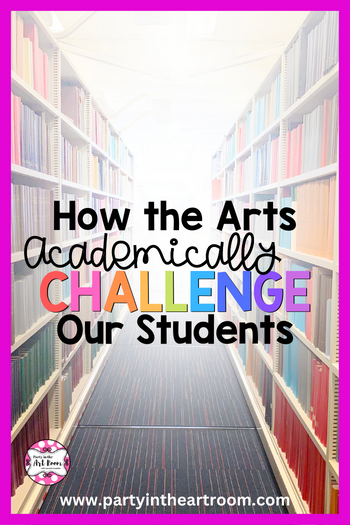Academically Challenged Students Are Prepared for Success in Adulthood and Participation in A Global Environment
When it comes to educating our children, it’s important to recognize that there is much more than just academics involved. Whole child education recognizes the importance of developing a student’s emotional, physical, and social needs, in addition to the traditional academic focus.
This blog post is the first in a five-part series exploring how the arts can contribute to the education of the whole child for each of the five whole child tenets. Here, I will discuss the importance of ensuring students are academically challenged and why it is essential for preparing students for success.
Personal Growth
For students to be successful and push themselves to the highest levels in all aspects of life they need to be continuously challenged and step outside of their comfort zone. This is the only way personal growth can be achieved.
Graduates of today are expected to have high levels of problem-solving abilities and good interpersonal skills as a basis of all skillsets. The combination of these skills will lead to vital communication, critical thinking, reasoning, and problem solving skills which will help them work more productively. The ability to successfully work in collaboration with others is also important in developing a useful a growth mindset.
These skills cannot be developed unless an individual is challenged and pushed out of their comfort zone. A growth mindset cannot be developed through passive activities such as memorizing facts.
A deeper understanding on the connection between information must be developed, students need to be encouraged to think for themselves.
Research shows that if students actively encourage and guide the direction of content in classrooms it aids the development of neural pathways. Active engagement, and the freedom to ask questions and hold open dialogue on various topics being taught in the classroom is important to develop critical thinking skills.
To be challenged means asking for analysis on topics with guidance, to work together to find answers and look for meaning and different perspectives on a given topic. To share their ideas and listen to the ideas of others in the classroom, and respectfully to those which may differ to theirs. To be able to explain their own opinions and insights eloquently, but also to be able to ask direct questions and reflect on the information they have received and process it with their own opinions and beliefs putting it into a wider context.
To encourage students to engage they need to be mentally stimulated and challenged, which also increases motivation and the need to seek out new information which contributes both to continuous academic and personal growth into adulthood.
The aim is also to “normalize” challenge so that it is seen in a positive light alleviating the fear of failure which may otherwise prevent students from embracing opportunities and holding back on their own potential.
Challenges also help students develop the ability to pick themselves up after setbacks and nurture perseverance in struggles.
The Arts Are Challenging (and Rewarding)
The creative arts allow students to become more engaged and challenged in different ways to more academic topics. They may be challenged by learning physical techniques or by reaching for their innermost emotions to express themselves freely. The arts create and safe space to explore these feelings.
Every student experiences challenging work differently depending on their individual background, culture, family life etc., but they must all be supported by qualified adults who can give continuous feedback and encouragement, whilst setting expectations for their students to aim higher.
Students who learns how to accept challenges and challenge themselves are more likely to succeed as adults, developing a higher level of resilience, taking more calculated risks by trying new things and learning more new skills and being open to new experiences which will only excel their careers and personal lives.
Conclusion
In the next part of this five-part series about the arts and the whole child, I will explore how healthy children are more productive at school and how the arts contribute positively to supporting the whole child.
I’m Amanda, and I align standards and integrate content to help teachers meet the needs of the Whole Child in art class! I have yet to find a standard that I couldn’t teach through art, and I want to share it all with you.
Not sure where to start with bringing art and content together? This freebie guide is packed with 25 ideas to align your art lessons with math and ELA standards. Your students will be crafting art and practicing algebraic thinking. Win-win!
I want all students to feel successful in the art room, so I created a standards-based Daffodil Collage lesson to do just that! The lesson includes an artist study, student reflection, and more, so push your artists to their full potential.
Follow along on my Instagram page for more tips on teaching the Whole Child in the art room!
Connecting art and content together doesn’t have to be mind-boggling. I’ve made it simple with 25 math and ELA art lesson starters - for free! Plus, I included 15 worksheets for students to reflect on their art-making journey.



